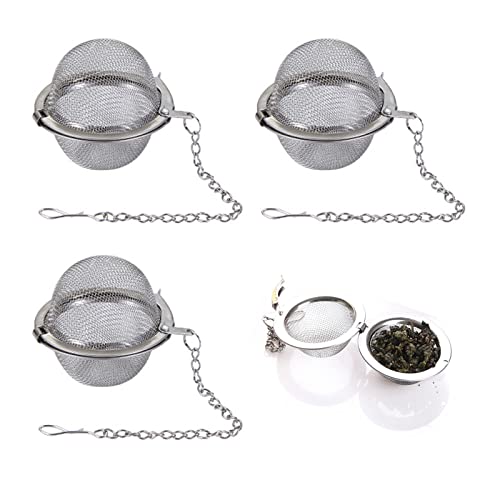Rosemary is a tasty herb that is easy to grow and can spread quickly. If you've found yourself with an abundance of rosemary, you may be wondering what you can do with all of it. Well, you've come to the right place. We've put together this guide to tell you everything you can do with rosemary.
The entire rosemary plant is technically edible, including the stems and flowers. Certain parts of the plant are used for different things due to their varying flavors.
So what parts of the rosemary plant are best for which uses? And how can you make use of the entire plant to reduce waste? Keep reading to learn about everything you can do with your rosemary harvest.
Are All The Parts Of The Rosemary Plant Safe To Eat?
Yes, the rosemary plant is entirely safe to eat. Stems, leaves, flowers, and roots are technically safe for human consumption. Not all of these parts are quite as tasty as the leaves, though, and some of them are better suited for uses outside the kitchen.
Rosemary has many health benefits, too; it works as an anti-inflammatory and may improve brain function and cognition.
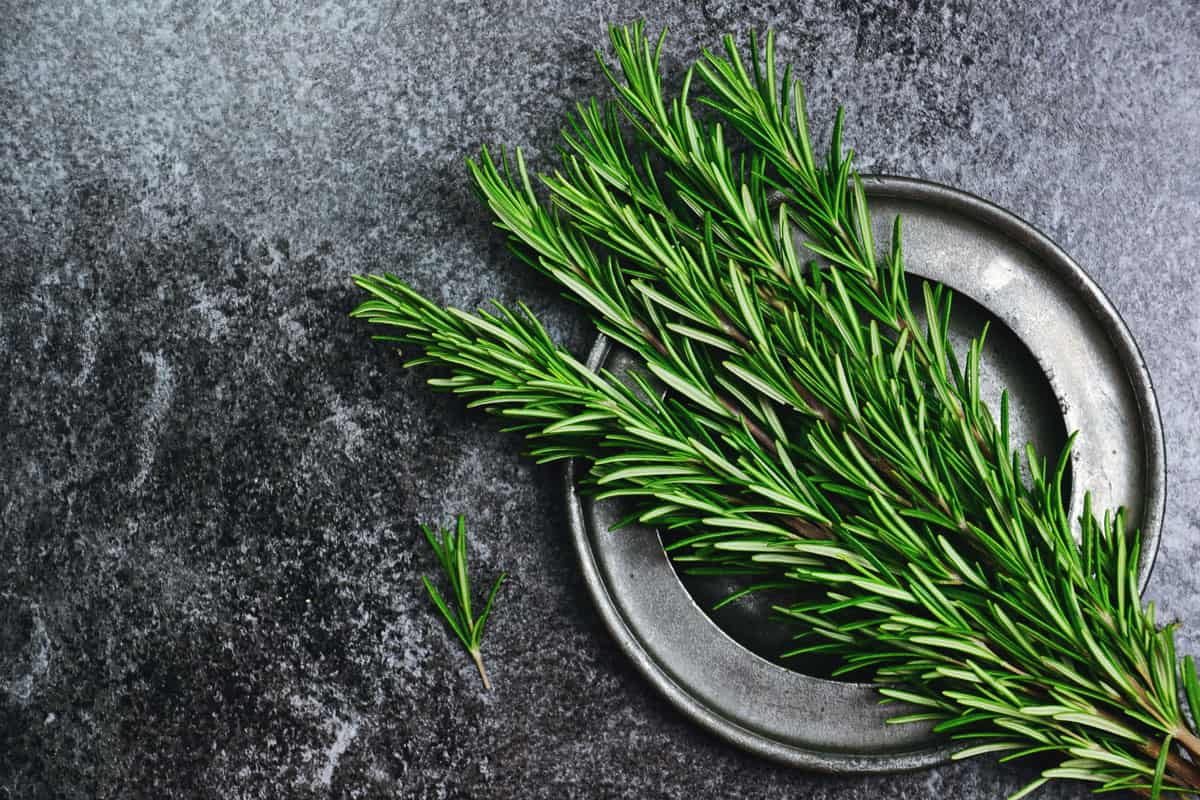
The Leaves
The leaves are the most delicious part of the rosemary plant and can be used to season various dishes directly. You can season food with fresh or dried rosemary with similar outcomes. It can also be used in teas and soaps and to make all-natural do-it-yourself room sprays.
OXT Three Piece Tea Infusers
This three-pack of tea infusers is the perfect way to start making tea blends. Use your rosemary leaves and flowers mixed with your other favorite herbs to create your own unique blend.
Click here to take a look at this set on Amazon.
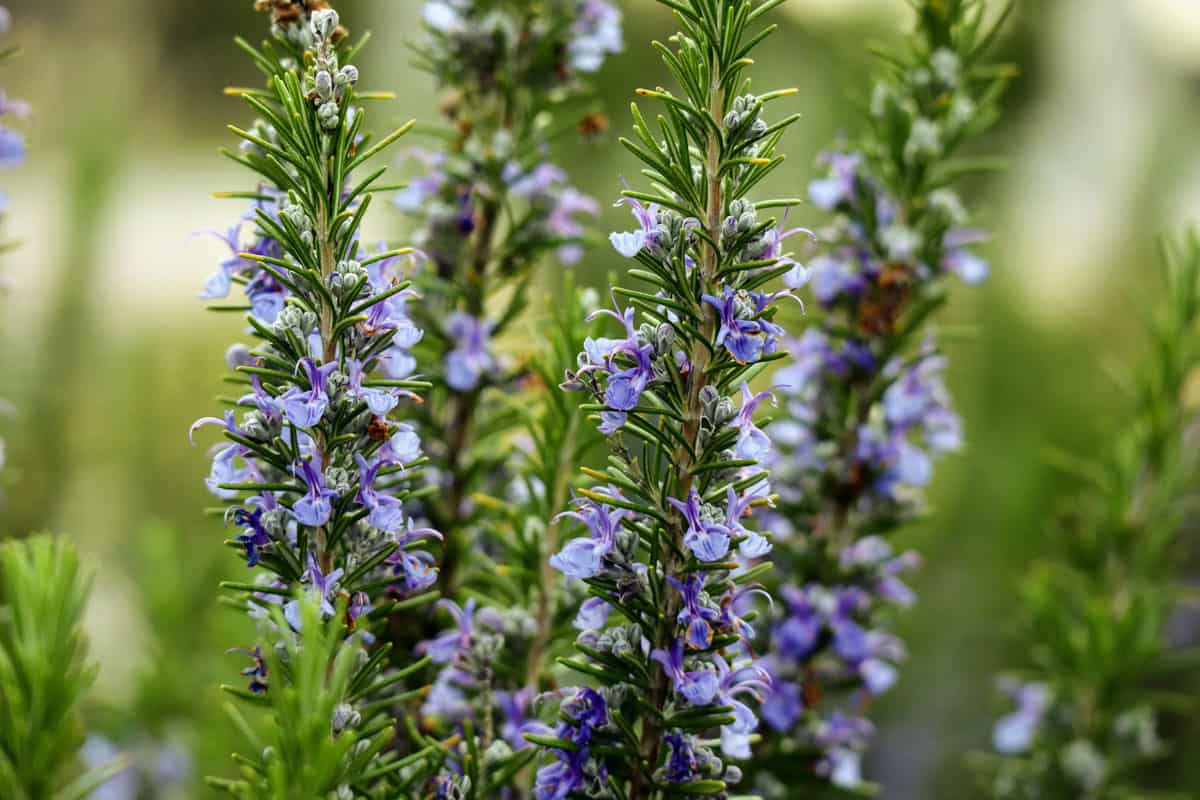
The Flowers
Rosemary flowers have a mild flavor that adds a little flavor to dishes. They're most often used as garnishes, but in some cases, they are used to spice and flavor dishes. They are often seen in salads, drink garnishes, teas, potpourri, and homemade soaps.
Primal Elements Shae Butter Soap Base
Use a premixed soap base like this and combine it with your leftover rosemary flowers to create natural soaps for yourself and as gifts for friends. This 5-pound block of soap base is unscented, so you can add any herbs you want to achieve your desired scent.
Click here to see this soap base on Amazon.
The Stems
The stems have a much more subtle flavor than the rest of the plant, but they still have plenty of uses. They offer plenty of aromas and still harbor a hint of flavor that can be amplified with the proper methods.
Try infusing some olive oil with rosemary by dropping the stems in and allowing them to soak. Another great way to use stems is to throw them into homemade soups, stocks, and broths to add flavor and remove them before serving.
FineDine Glass Oil Dispensers
This set of two oil dispensers gives you a chance to try a variety of infusions. They can also be used for vinegar to create a nice set for pairing.
Click here to see these bottles on Amazon.
What Does It Mean When A Rosemary plant Flowers?
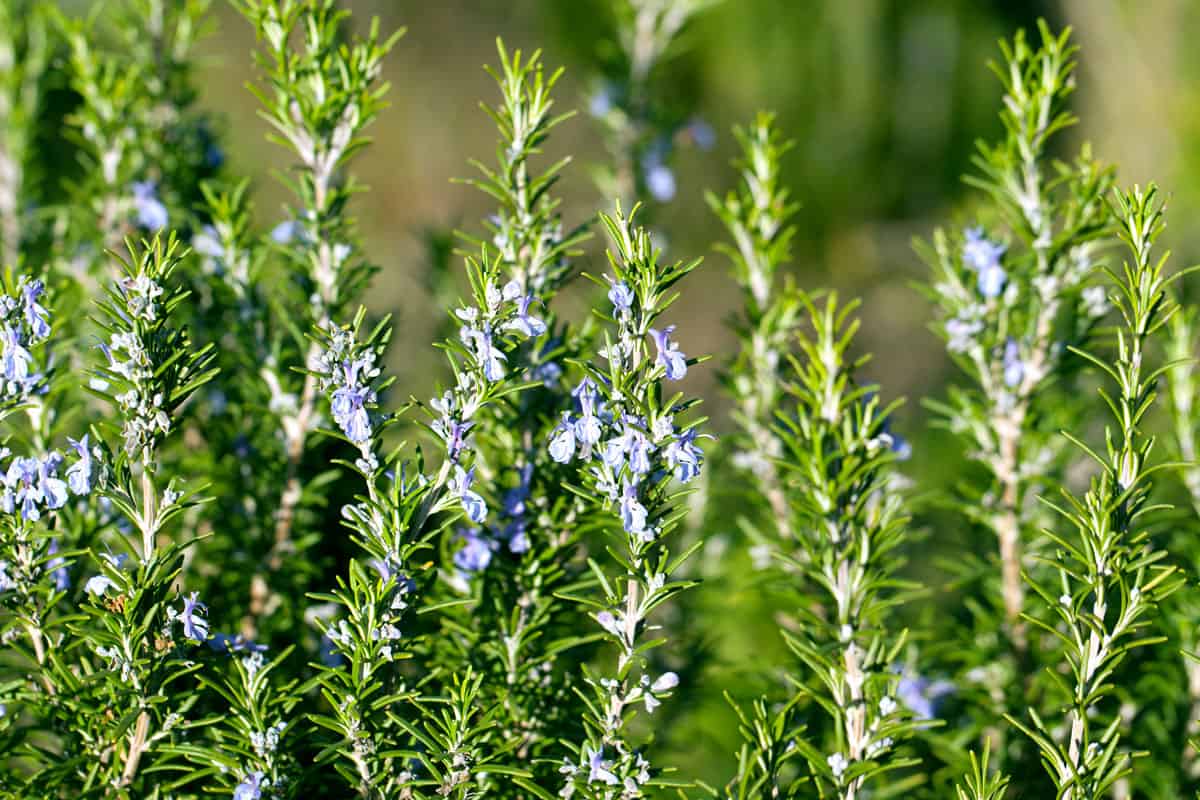
It is perfectly normal for a rosemary plant to flower towards the end of the growing season as it completes its reproductive cycle. The flowers can pollinate each other and produce seeds that will fall and spread around the surrounding area.
This can make your rosemary patch much larger over time, so it's good to prune things as needed to keep things tidy.
Does Rosemary Grow Back After Cutting?
Yes, rosemary will grow back even more vigorously after its pruned.
The next growing season will have renewed growth wherever the plant is clipped, so don't be afraid to harvest as much as you can at the end of the growing season. As long as you don't cut back the brown, woody stems that make up the case of the plant, it will recover just fine.
What Are The Benefits Of The Rosemary Flower?
The scent of the rosemary flower is often associated with stress and anxiety relief. It is also used in balms and salves to reduce inflammation topically. Using rosemary flowers in teas and aromatherapy projects can positively impact mental health and relaxation.
What Is The Lifespan Of A Rosemary Plant?
Well-cared-for rosemary plants can remain healthy for up to 15 years in the proper conditions. This long lifespan is generally associated with outdoor plants, with potted varieties having shorter lifespans. It's a versatile herb that anyone can grow in just about any condition; even a window will do.
Environet Hydroponic Herb Growing Set
This herb growing kit offers three different herbs that can be grown in your window. This set includes rosemary, lavender, and oregano, but they offer an assortment of other varieties.
Click here to see this herb kit on Amazon.
Can You Freeze Rosemary For Later Use?
Yes, rosemary and many other herbs can be frozen for future use. Simply place the herbs in a freezer bag, press out the air, and then put the bag in the freezer. Rosemary frozen in this fashion will stay in the freezer for at least six months.
Is It Better To Dry Or Freeze Rosemary?
Dried rosemary won't be as flavorful or aromatic as frozen rosemary. Frozen rosemary retains most of its flavor and freshness, but dried versions lose a lot of impact during the drying process. Rosemary lasts a lot longer when it's dried, remaining useable for up to a year.
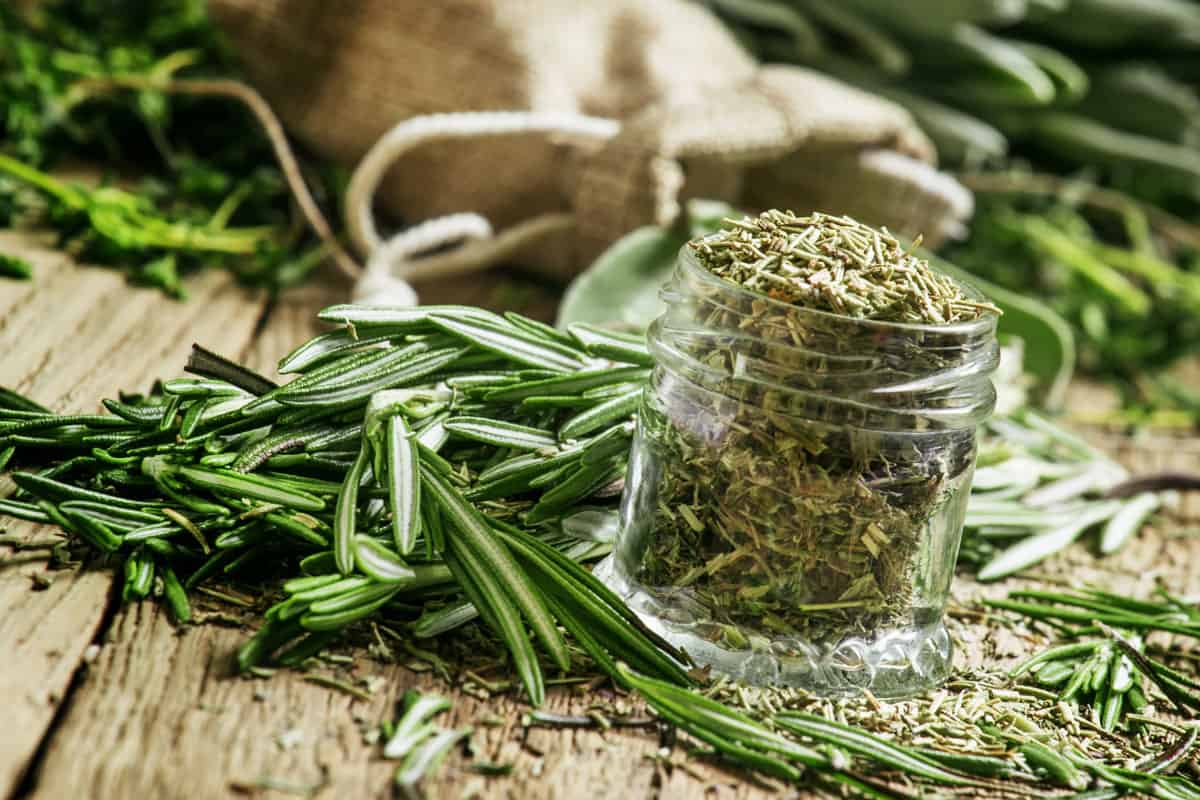
How Do You Dry Rosemary?
You can dry rosemary using several different methods. A dehydrator makes short work of the drying process, finishing the job in just a few hours. Air drying will take weeks and requires proper temperature and humidity conditions. Oven drying takes 1-2 hours and needs to be done at low temperatures and often checked to avoid the risk of burning the herbs.
Commercial Chef Food Dehydrator
This small food dehydrator is the perfect solution for a large harvest of herbs. You can dry your herbs perfectly in this machine for up to a year's worth of use.
Click here to see this dehydrator on Amazon.
Is Rosemary Water Good For Hair?
Yes, water infused with rosemary has been noted to stimulate hair growth when regularly used as a rinse. To make rosemary water, boil fresh or dried rosemary in water and allow plenty of time to steep. Let the water cool, then rinse your hair, soaking the follicles well.
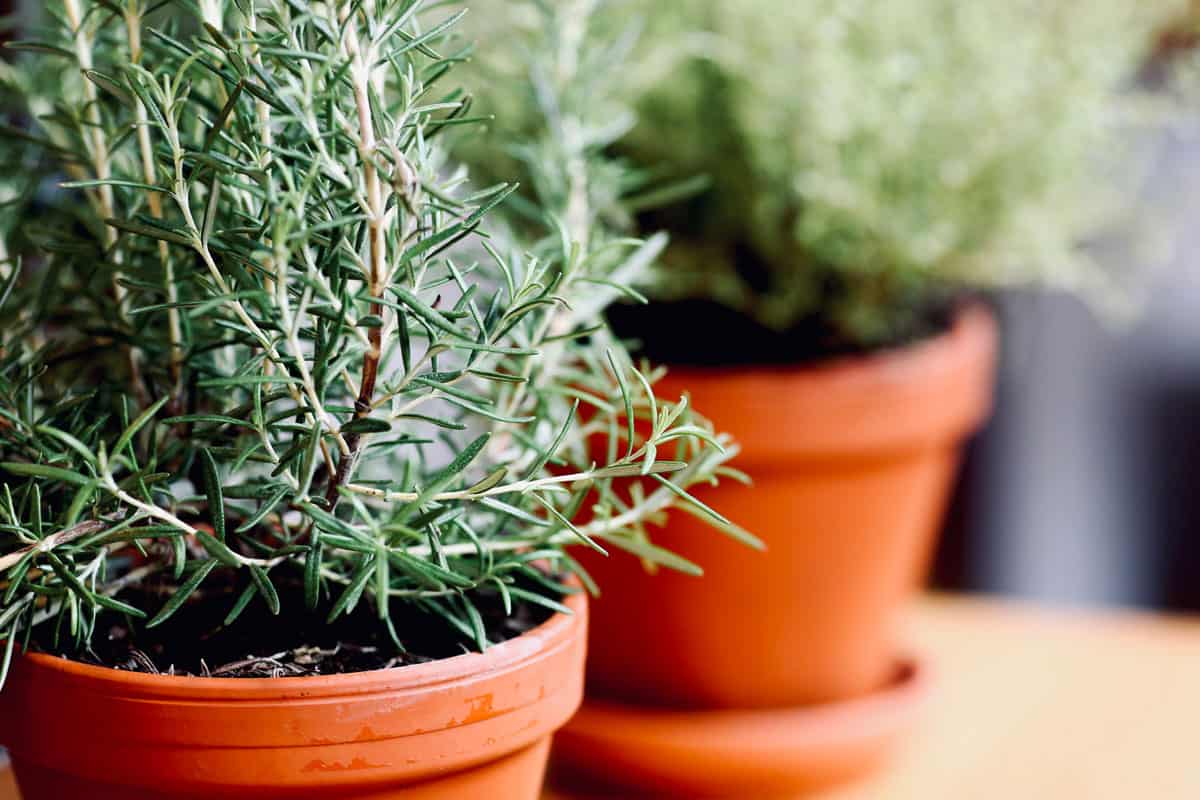
What Time Of Year Should You Cut Back Rosemary?
Rosemary should be heavily pruned or cut back in late spring after it finishes flowering. This will give the plant time to put its reinvigorated growth into producing new leaves instead of flowers.
The plant will restore itself in size quickly and may even exceed the previous year's growth.
Can You Use Rosemary That Has Gone To Flower?
Yes, rosemary that has gone to flower will still provide perfectly tasty leaves for seasoning dishes. The flowers can even be incorporated into your meal as a seasoning or a garnish if desired. The taste of the leaves won't change if the plant is in flower, but the flowers have a slightly different taste.
Can You Cut A Branch Of Rosemary And Grow It?
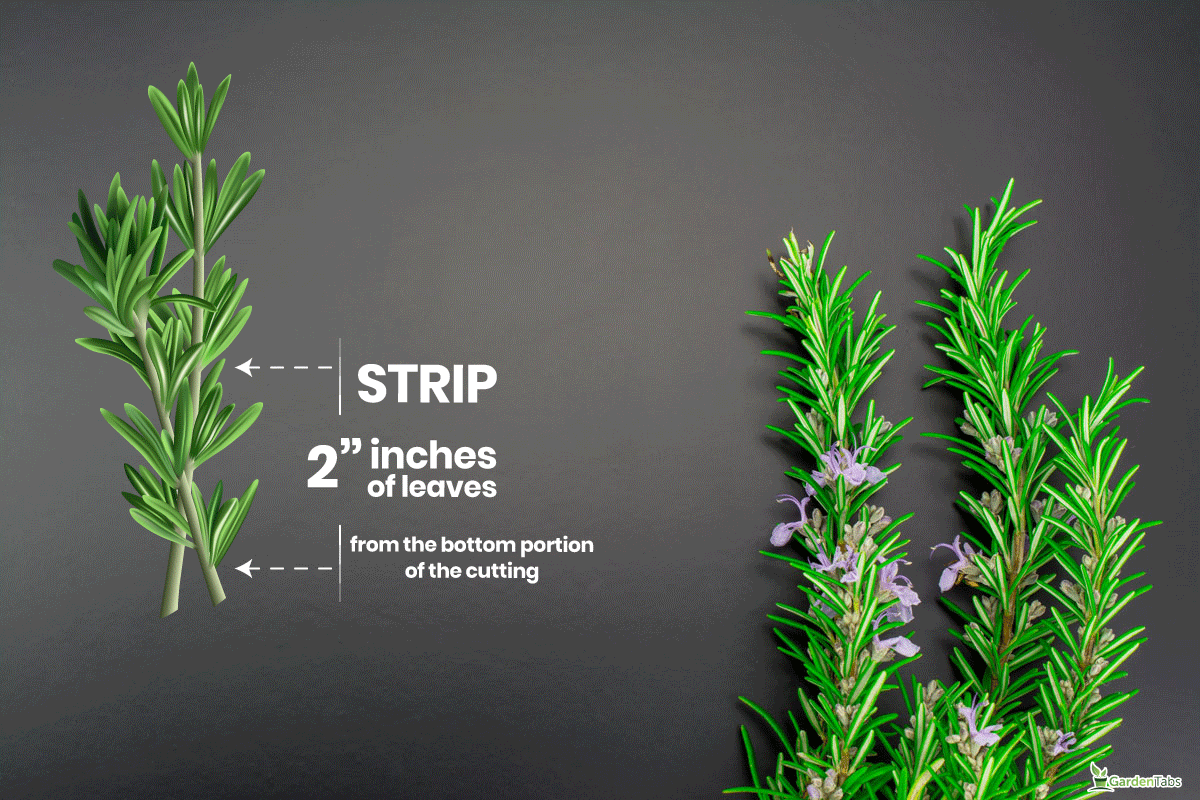
Yes, rosemary cuttings will root if treated with rooting hormone or left to soak in water for several days. Take a cutting with some fresh stem growth for the best results; these parts of the plant are younger and more likely to produce vigorous new growth.
Strip 2 inches of leaves from the bottom portion of the cutting and place the stems in a container of water to allow them time to root. In 2-4 weeks, you will see roots forming and can prepare to transplant these cuttings to the soil.
In Conclusion
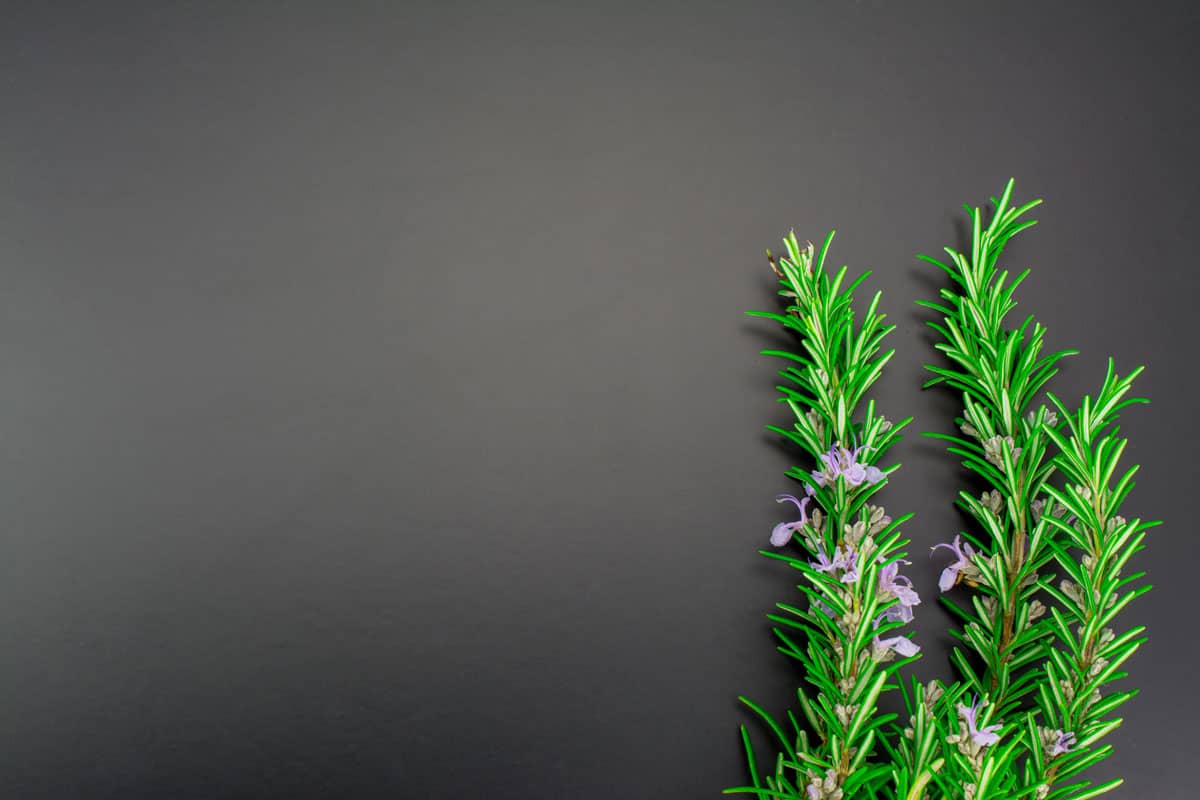
Now that you know all about the different uses for all the parts of the rosemary plant, you're ready to put your harvest to good use. Don't forget to take all the usable herbs off the plant before the end of the growing season to maximize your yield. Have fun experimenting with your rosemary projects, and enjoy the fruits of your labor.
You May Also Be Interested In These Similar Articles...
For help finding more easy-to-grow herbs to add to your supply, read our article "18 Herbs That Like Full Sun For Your Kitchen Windowsill."
To learn more about growing rosemary in cold climates, read our article "Is Rosemary Cold Hardy? [Tips For Your Garden In Winter]"

